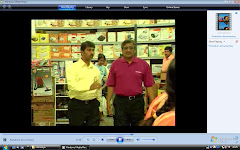The operations within the store can run safely and smoothly if a proper process of managing space, understanding fixture capacities and placement of merchandise is followed.
Racking and stacking capacity
This is a very basic and most essential process which every store needs to follow during merchandising and displaying the products on the shop-floor. The objective behind it is to avoid inconvenience and congestion on the shop floor, and minimize damages of merchandise on the shop floor. It provides convenience to the customers while shopping and improves the ambience of the shop floor. This process also is very beneficial for better inventory management.
Let us understand this concept along with the various fixtures used inside a store to display merchandise. Please note that this is a standard benchmark to be followed while displaying the merchandise on the fixtures. It also depends on the dimension of the merchandise and hence may vary accordingly.
Fixtures used to hang merchandise on the wall panels :( Mostly used for apparels)
Sloping arms: these arms are used on gondolas or slat-walls to display men’s, ladies and kids tops
Racking Capacity:
Max. 7 pieces per unit
Pegs: these are used to mostly to display accessories. Various types of pegs are used depending on the structure of the back wall panel. They can also be placed on gondolas.
Racking Capacity:
Maximum 15 pieces per unit
Step arm: placed in gondolas and slat-walls and used for displaying men’s, ladies and kids tops
Racking Capacity:
Maximum 15 pieces per unit
D-bar: This fixture is used on gondolas and on slat-walls and specially used to rack stocks more in quantity.
Racking capacity:
For blazers- maximum 12 pieces per unit
For men’s and ladies tops- maximum 35 pieces per unit
For kids tops- maximum 50 pieces per unit
Fixtures used on the floor to rack merchandise
These fixtures make it very easy for customers to browse through the merchandise.
4-way browser with straight arms: used to display men’s, ladies, and kids tops and bottoms Racking capacity:
Maximum 60 pieces per unit
4-way browser with step-arms:
Racking capacity:
Maximum 40 pieces per unit
The 4-way browser can be customised as a browser with two straight arms and two step/sloping arms on opposite side. Racking capacity will accordingly change.
8-way browser with u-arms: this fixture is used to display only kids’ tops and bottoms
Racking Capacity:
Maximum 64 pieces per unit
16-way browser with u-arms: this fixture is also used only to display kids’ merchandise, especially to promote co-ordinates or sets of tops and bottoms.
Racking Capacity:
Maximum 128 pieces per unit
Fixtures used on the floor to stack merchandise: used for apparels and mostly for FMCG and General Merchandise.
3-feet shelf: These shelves are used on wall panels, or on a 4-way gondola. They are either made of wood, metal or glass, depending on the format and concept of the store. Merchandise from every category can be displayed on this fixture and this is the most common and effective fixture used in all store formats.The capacity of stocks to be placed on these shelves completely depends on the type of merchandise being displayed. It will again vary depending on the format of the store.
A- Gap Table: This fixture is mostly placed in the centre of the department and all new arrival merchandises of any style in different colours are displayed in this fixture to highlight the collection. Advantage of this fixture is that it can hold more stocks comfortably.
Racking Capacity:
Maximum 160 pieces per unit
N-Table: also termed as Nesting or Nordstam table. It is mostly placed at two corners of the entrance to the store or the department. Sometimes in the absence of the gap table it might be positioned at the centre of the department as well.
Racking Capacity:
Maximum 110 pieces per unit
Fixtures used in supermarkets and hypermarkets
N-Table (Square): This fixture is mostly used to display general merchandise and consumer durables. Its capacity to hold stock again depends on the type of merchandise being displayed on it. Here in the picture you can see loose utensils displayed on it with a maximum capacity of 400 pieces.
Bins: Bins are used to display free size loose merchandise which are mostly on offers. This bin is also used to promote merchandise in various departments.
They are of three types:
Stack bin: as the name suggests one can stack loose merchandise in it. It can be assembled as a two layered or three layered bin and placed to the two ends of a gondola. One can stack around 150 pieces of loose merchandise in this bin.
Maximum capacity:
to stack around 150 pieces.
Stall Bin: This particular bin can be stalled in any prominent area within the store to promote loose merchandises and general merchandise. Mostly stocks which are on offer are placed in these bins. Also this bin is mostly placed near cash counters to encourage impulse buying.
Maximum capacity:
to fill around 200 pieces.
Hyper bin: These bins are the bigger version of the stall bin and are basically used to stack bigger merchandise like pillows, cushions, beach towel, etc.
Maximum capacity:
to fill around 250 pieces.
Pallet: heavy products from FMCG like loose staples in huge cylindrical vessels, molded luggage from general category of merchandise, and consumer durables and electronic items like refrigerator, television, etc. are not placed directly on the floor as it does not give a good image of the product. Hence they are placed on pallets. Advantage of using pallets is that it does not damage the flooring.
what's missing in bangalore?
-
what do you miss the most when you move cities?
your friends? your colleagues? your favourite movie halls? eating joints?
your house/ flat/ apartment? the ...
15 years ago
